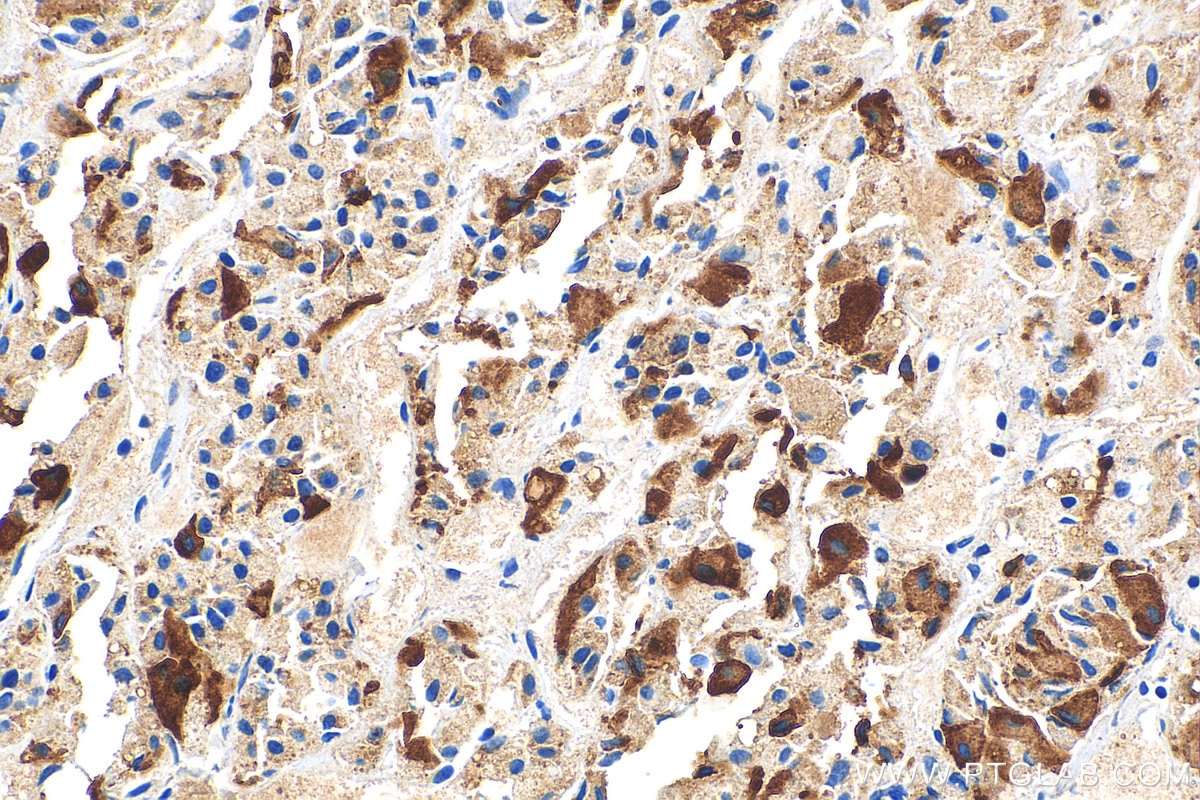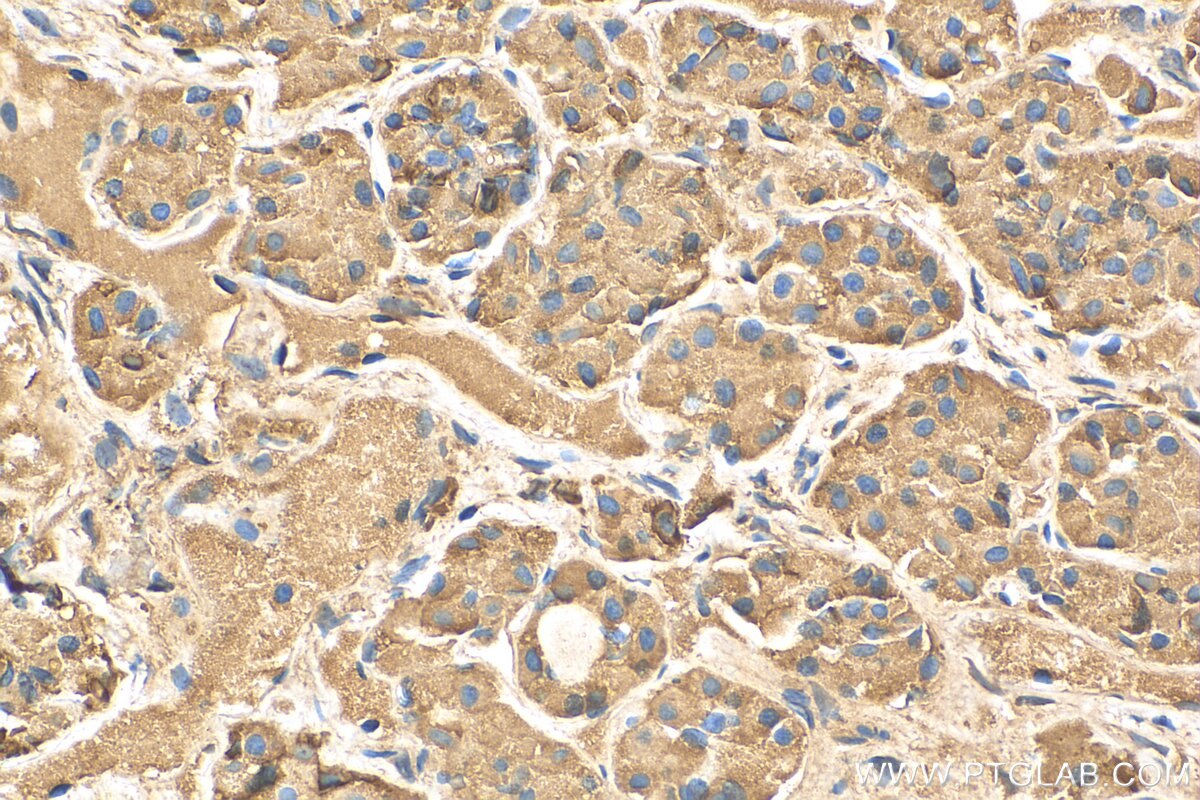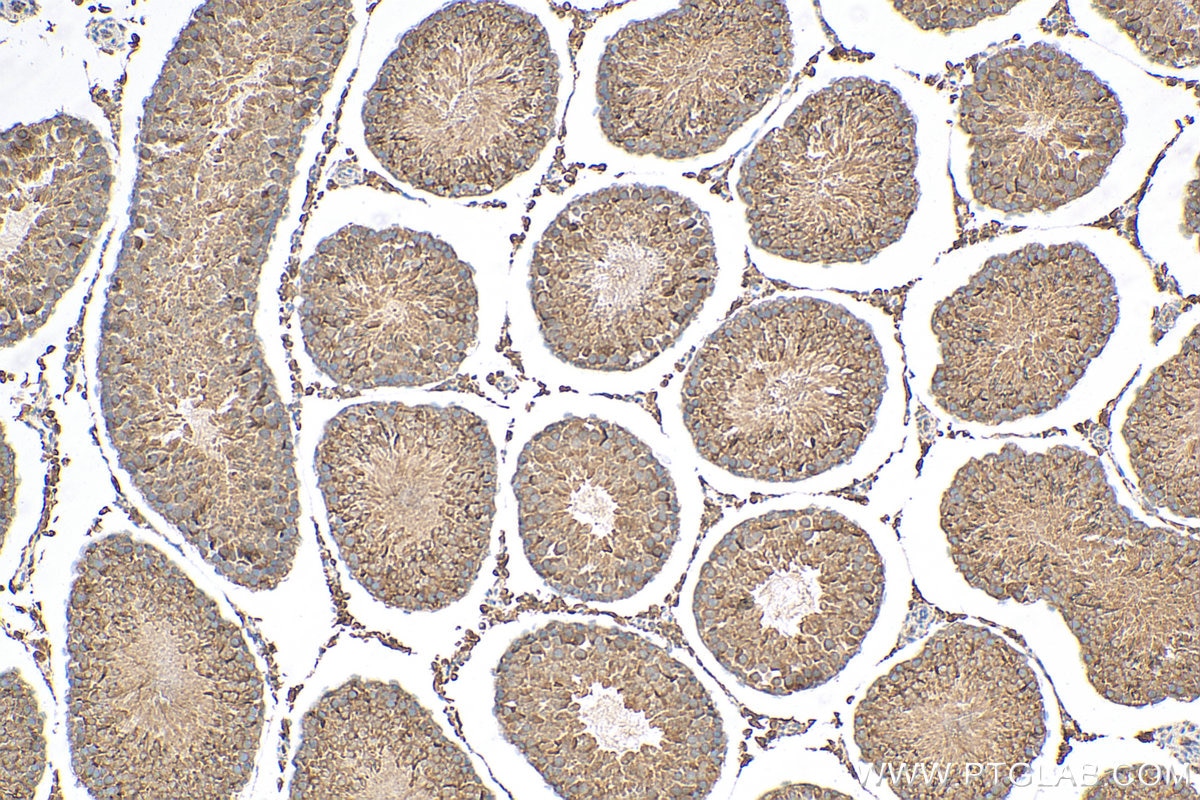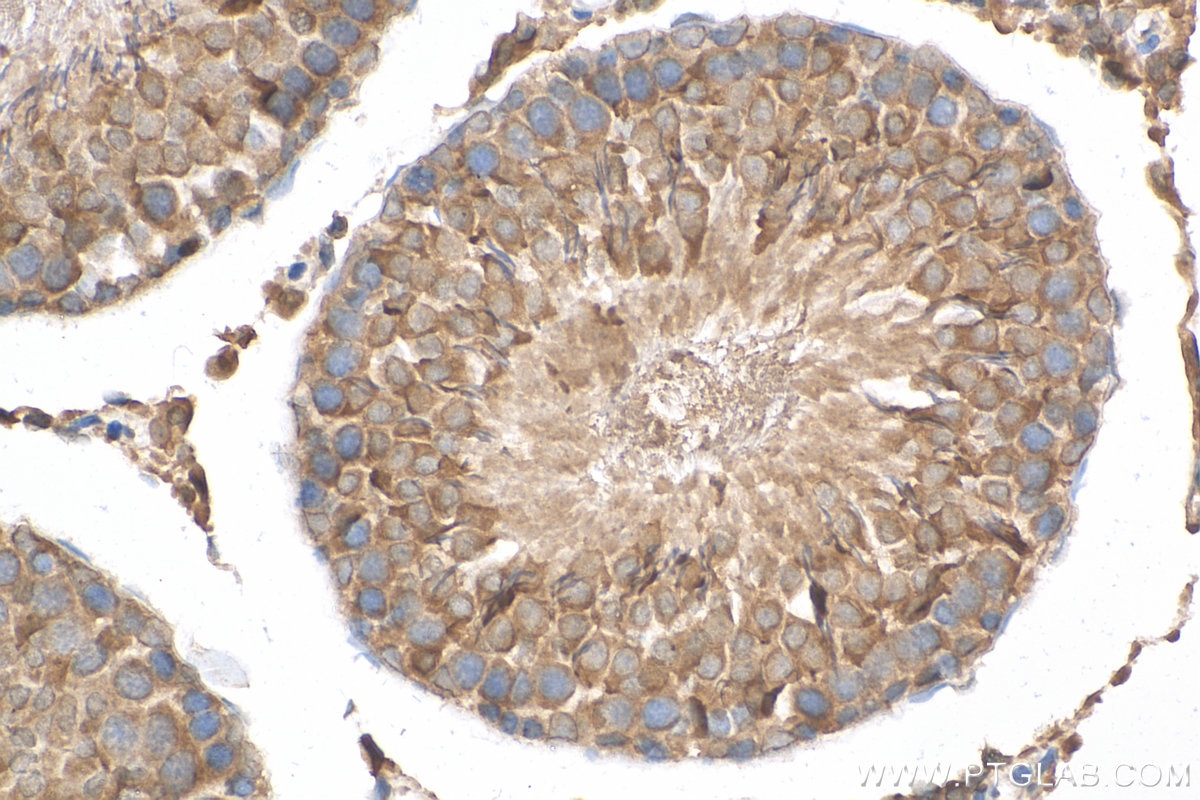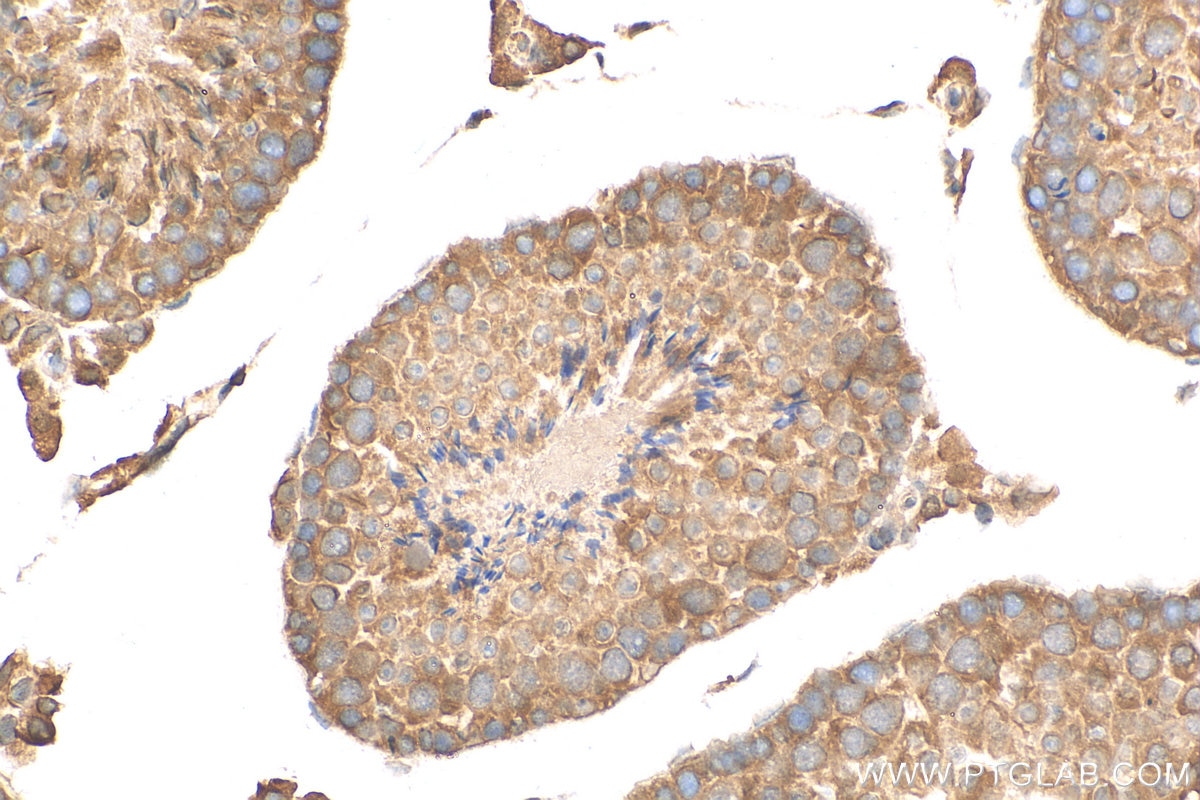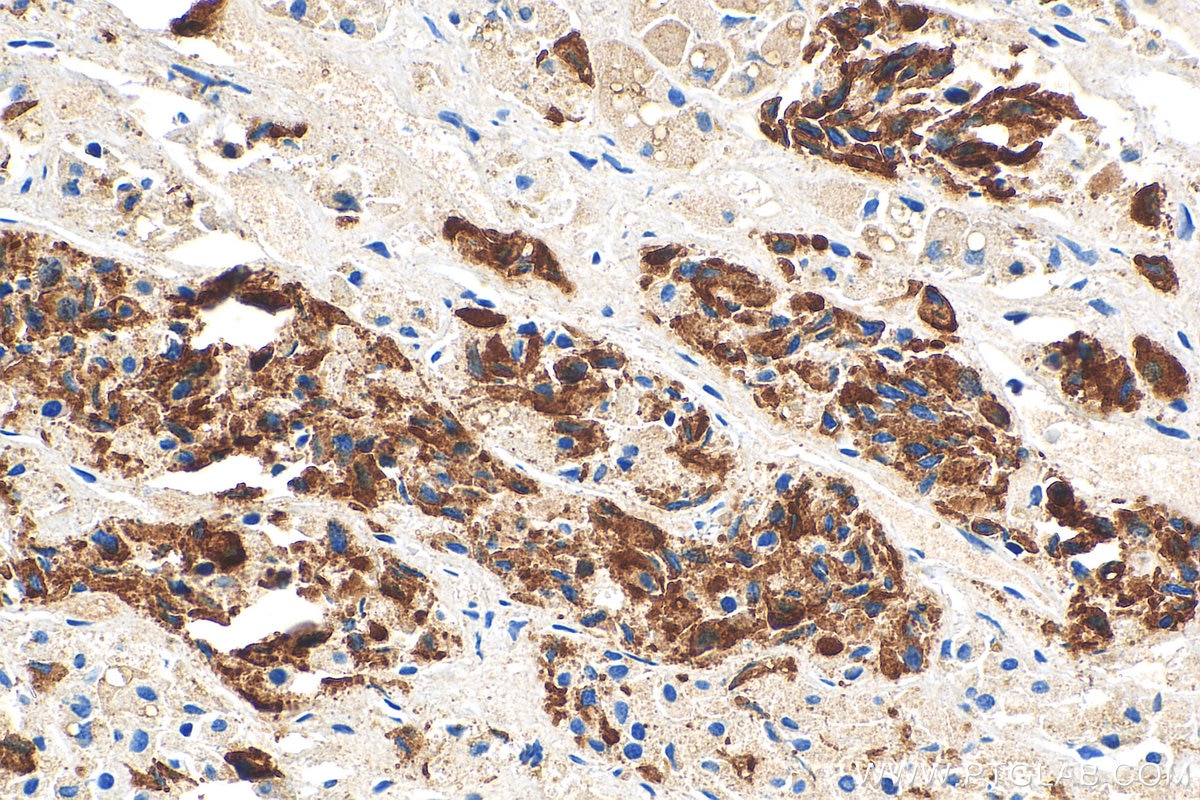Prolactin Polyclonal antibody
Prolactin Polyclonal Antibody for IHC, ELISA
Host / Isotype
Rabbit / IgG
Reactivity
human, mouse, rat
Applications
IHC, ELISA
Conjugate
Unconjugated
Cat no : 16525-1-AP
Synonyms
Validation Data Gallery
Tested Applications
| Positive IHC detected in | human pituitary tissue, rat testis tissue, mouse testis tissue Note: suggested antigen retrieval with TE buffer pH 9.0; (*) Alternatively, antigen retrieval may be performed with citrate buffer pH 6.0 |
Recommended dilution
| Application | Dilution |
|---|---|
| Immunohistochemistry (IHC) | IHC : 1:400-1:1600 |
| It is recommended that this reagent should be titrated in each testing system to obtain optimal results. | |
| Sample-dependent, Check data in validation data gallery. | |
Published Applications
| IHC | See 1 publications below |
Product Information
16525-1-AP targets Prolactin in IHC, ELISA applications and shows reactivity with human, mouse, rat samples.
| Tested Reactivity | human, mouse, rat |
| Cited Reactivity | human |
| Host / Isotype | Rabbit / IgG |
| Class | Polyclonal |
| Type | Antibody |
| Immunogen | Prolactin fusion protein Ag9764 |
| Full Name | prolactin |
| Calculated Molecular Weight | 227 aa, 26 kDa |
| GenBank Accession Number | BC015850 |
| Gene Symbol | PRL |
| Gene ID (NCBI) | 5617 |
| Conjugate | Unconjugated |
| Form | Liquid |
| Purification Method | Antigen affinity purification |
| Storage Buffer | PBS with 0.02% sodium azide and 50% glycerol pH 7.3. |
| Storage Conditions | Store at -20°C. Stable for one year after shipment. Aliquoting is unnecessary for -20oC storage. 20ul sizes contain 0.1% BSA. |
Background Information
Prolactin is also named as PRL and belongs to the somatotropin/prolactin family. The proteins encoded by PRL are secreted into the cell surroundings. And they are abundantly expressed in pituitary gland, adenohypophysis, decidua and testis. Indeed, chemically, prolactin appears in a multiplicity of posttranslational forms ranging from size variants to chemical modifications such as phosphorylation or glycosylation. It is not only synthesized in the pituitary gland, as originally described, but also within the central nervous system, the immune system, the uterus and its associated tissues of conception, and even the mammary gland itself (PMID: 11015620). Prolactin acts primarily on the mammary gland by promoting lactation (PMID: 30546056). The major form of prolactin found in the pituitary gland is 23 kDa, variants of prolactin have been characterized in many mammals, including humans. Of the cleaved forms that have been characterized, 14 kDa, 16 kDa, and 22 kDa prolactin variants have been most widely studied (PMID: 7937959) (PMID: 8425495).
Protocols
| Product Specific Protocols | |
|---|---|
| IHC protocol for Prolactin antibody 16525-1-AP | Download protocol |
| Standard Protocols | |
|---|---|
| Click here to view our Standard Protocols |
Publications
| Species | Application | Title |
|---|---|---|
Transl Cancer Res Prolactin (PRL), placenta growth factor (PIGF) and nerve growth factor receptor (NGFR) as biomarkers for early diagnosis and prognosis in patients with esophageal squamous cell carcinoma (ESCC) |
